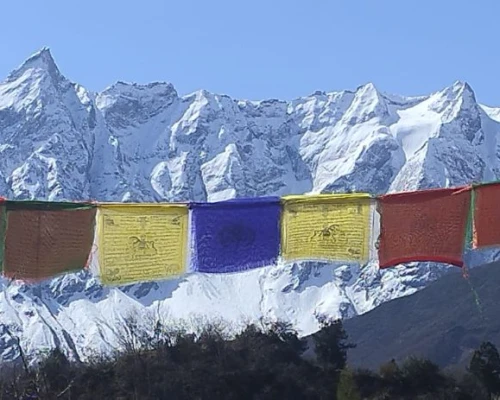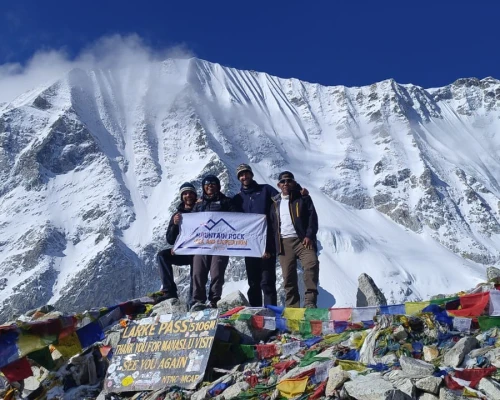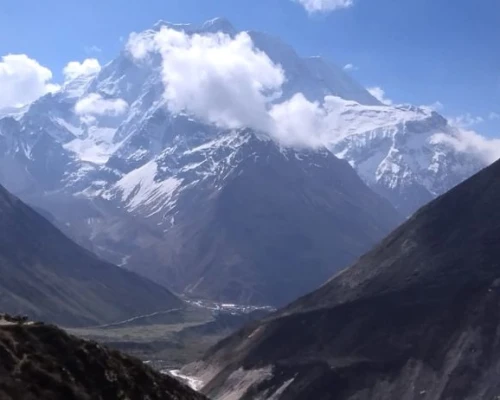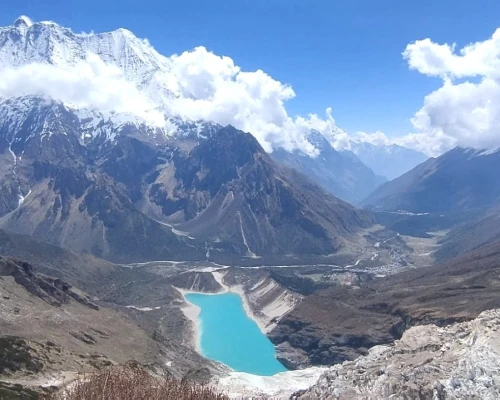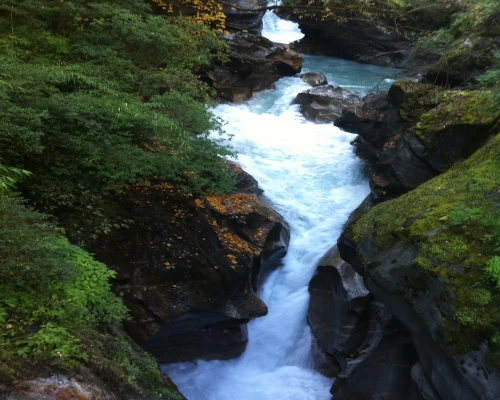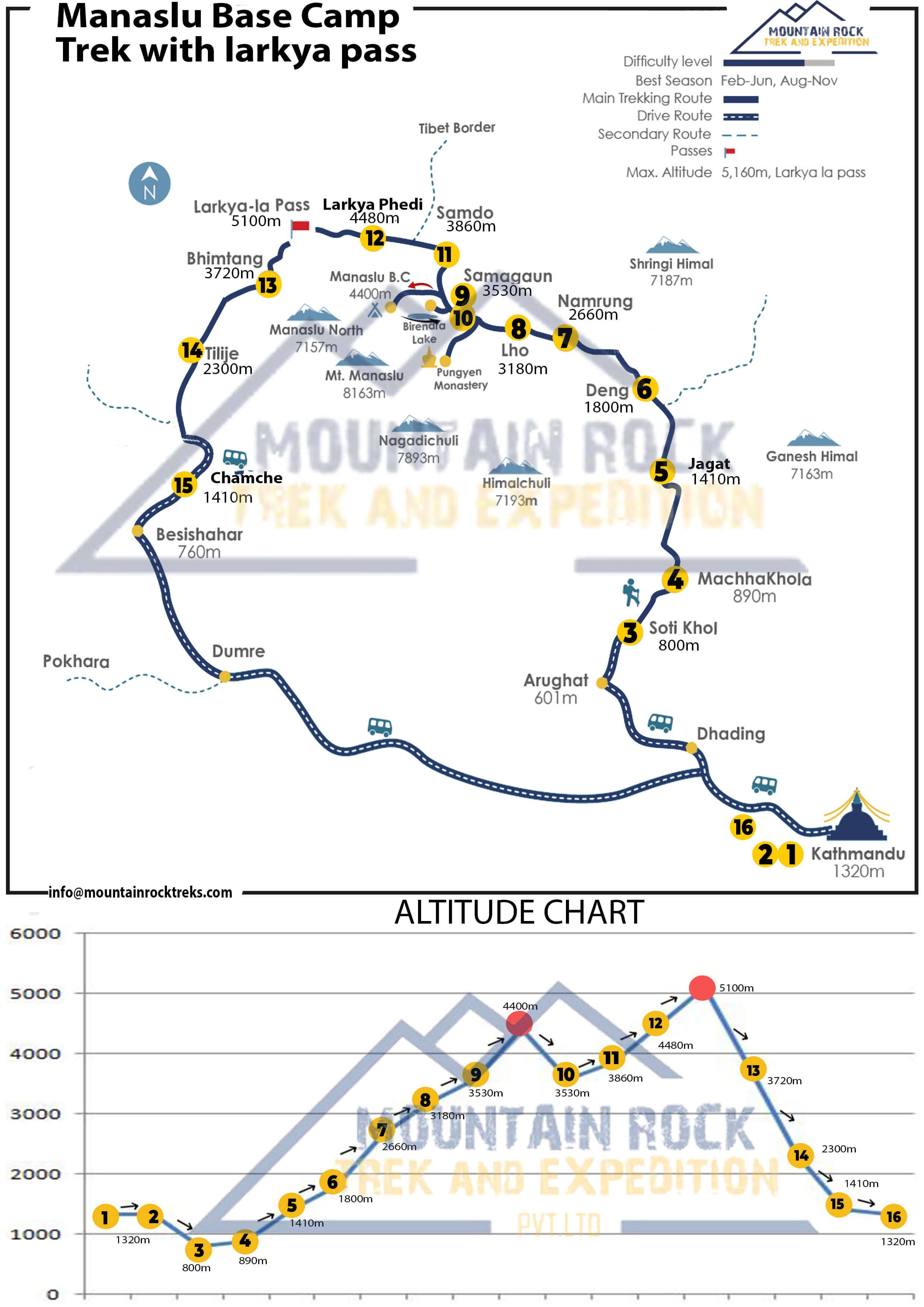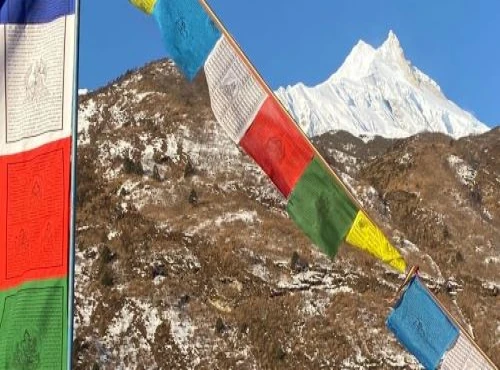Manaslu Base Camp Transportation
You will travel 160 kilometers from Kathmandu to Maccha Khola through SotiKhola to begin the hike. By private Jeep, it takes 7 hours and by local bus, it takes 8 to 9 hours. The first day of the expedition is an off-road adventure ride.
You will drive 6 hours from Dharapani in a Jeep and then change to another Jeep or local bus for a 7-hour trip to Kathmandu at the end of the trek.
Permits for the Manaslu Base Camp Trek
The Manaslu Trek is a designated wilderness area. A restricted area permit is necessary, which may be obtained from a local company. ACAP and MCAP permits will be required for the hike. At least two hikers are required for the hike.
Manaslu Base Camp Trek Accommodation
The walk to Manaslu is a teahouse hike. Every night, you will sleep at the tea house, which will be fairly modest with two single beds. Outside of teahouses, there are usually common toilets. The dining room is the sole place with heat. In teahouses, food is available. During the trip, you will stop for lunch at teahouses.
Wifi and phone service on the Manaslu Circuit Trek
The majority of tea establishments have WiFi. If you need to contact family or friends back home, tea establishments provide SAT phones that may be used for a little fee to call home. On this expedition, the local phone hardly works. In the Manaslu area, Nepal Telecom has higher coverage than Ncell.
Policy on Cancellation
You can get a full refund if you withdraw up to 30 days before the experience. You must cancel at least 30 days before the start time of the activity to get a complete refund. If anyone cancels less than 24 hours even before the commencement of the activity, you will not receive a refund. Any modifications made less than 30 days before the commencement of the experience will be rejected. Cut-off times are depending on the local time of the experience.
Begin your journey on the Manaslu Base Camp
You'll arrive in Kathmandu at least two weekdays (office days) before the journey starts. This is necessary since obtaining restricted area permission to Manaslu will take one day, and we will require your passport and visa to apply for this permit. This day will also be used for hike briefing.
Free airport pickup and drop-off
We provide gratis airport pick-up and drop-off at Tribhuvan International Airport. When you arrive, our Trekking representative will greet you with a leaflet with your name. They will greet you with a garland flower or a khada as a welcoming gesture. They will then drive you in a private vehicle to your accommodation.
When you return home after your stay, we will pick you up from your hotel in Kathmandu and transport you to the airport for your international flight.
Manaslu Trek, Meals
This fascinating trip in Nepal takes you to high altitudes near the world's eighth highest mountain, requiring enough diet. You'll have enough excellent, hygienic, and healthy meals, but you won't have as many options as you would in a big city.
Some famous meal items During Manaslu Trekking
Oatmeal, cornflakes, jam-filled French toast, butter, cheese, honey Tibetan bread or Chapati Tsampa (local porridge), Eggs, pancakes, muesli bread, fruits and vegetables, and hot beverages (varieties of teas and coffees, hot chocolates, etc.)
Menus in hiking regions include native, Asian, and western food, however, the menus grow shorter as we ascend higher.
Fresh veggies and ample liquids (green tea, lemon tea, hot lemon, garlic soup (obligatory), and ginger tea) are highly recommended for health advantages.
Though non-vegetarian options will be plentiful in hike locations, we do not advocate them because the meat may not be sanitary. Similarly, we recommend avoiding alcohol, hot chocolates, caffeinated beverages, and dairy products, especially cheese.
Best time for Manaslu Base Camp
The optimum months to climb Manaslu are March to May and September to November. During the winter months of December to February, heavy snowfall closes the lodges in Dharamsala, making crossing the Larkya La Pass difficult.
The rainy season, which runs from June through August, is prone to landslides and slips. As a result, we do not advise anyone to go hiking during the cold or rainy seasons.
The optimum seasons to walk the Manaslu circuit are spring and fall. The fall window is best between mid-October and mid-December. Spring begins in mid-March and lasts until the first week of June. Manaslu hike is also achievable throughout the winter if you are ready to put in a little effort. It's just a question of the weather, but the sky is clearest from December until mid-January. Getting to the trailhead during the monsoon used to be difficult, but a recently constructed road connecting Kathmandu and Arughat may make the Manaslu Circuit Trek more accessible in the future.
March, April, and May: Manaslu Trek (Spring)
The greatest time to walk the Manaslu Circuit is now. The weather is ideal, and you'll have spectacular views of Mt. Manaslu and the surrounding glaciers.
Temperatures begin to rise in mid-March, and with a bright sky, snow mountains are at their most beautiful. Lowlands begin to heat up in April and May. In the high mountains, the temperature is neither chilly nor hot. The temperature drops significantly at night. This is a popular trekking season for many people. The rhododendron flowers in various hues may be seen from the path. Temperatures in the highest mountains (Lho, Samagaun, Samdo, Dharmasala, and Bhimtang) can reach 18°C during the day and -4°C at night.
September, October November: Manaslu Trek (Autumn)
This is also one of the best seasons for the Manaslu trek in Nepal, which draws a large number of tourists. As the rain begins to fade, a great hiking climate emerges. The temperature reaches 20°C during the day and drops to -6°C at night.
As the season progresses, the skies clear and the mountains become visible. Many hikers go during this time to enjoy the festive atmosphere. Dashain and Tihar, two of Nepal's most important festivals, fall at this time.
Because of the sunny sky and bright days, November is the busiest month. The daytime temperatures are fairly consistent and stable, allowing you to appreciate the scenery, which includes towering snowcaps. The temperature continues to drop in December, and snow begins to fall, making the walk nearly difficult.
Acclimatization at Manaslu Base Camp
Altitude sickness is prevalent among hikers in high mountains and is preventive, although it requires rapid treatment if it is severe. Symptoms of altitude sickness are more common above 3500 meters. We spend four to five nights in trek zones over 3500m after leaving Samagaun (3530m / 11581ft). The highest point of our journey is Dharamsala, at 4480m (14698ft).
To avoid mountain sickness, we created the 16-day Manaslu Circuit Trek. Starting from Sotikhola (730m), we hike for seven days to reach Samagaun, giving our bodies enough time to acclimate to the high altitude. Furthermore, we shall rise gently and rest for a day at Samagaun. In addition, we will drink enough water every day of our walk to ensure a smooth passage of the Larkya La Pass.
We value your health and safety above all else, and we pledge that we will not jeopardize it at any cost. We will descend promptly if you are gravely afflicted. The trip leader can determine whether the team should descend or continue on the routes, taking into account everyone's best interests.
Chances of getting altitude sickness during the trek
Altitude sickness, sometimes known as acute mountain sickness, makes hiking difficult, particularly at high altitudes.
The altitude of the Manaslu Trek varies greatly. As a result, one of the most challenging challenges you may experience throughout the Manaslu Circuit Trek is adjusting to high altitudes.
The journey begins at 700 meters above sea level in Soti Khola and ends at 5213 meters at the Larkya La Pass. Because everyone is at risk of altitude sickness, being properly informed about the condition can help to reduce the risk.
Prevention of altitude sickness in Manaslu Base Camp
You should take the following steps to avoid altitude sickness:
Slowly ascend. To acclimate to the changes, your body requires two to three days of gradual elevation.
Your body demands more calories when you are at a greater altitude. So bring along lots of carbohydrate-rich foods.
Avoid alcohol, cigarettes, and sleeping medicines, as these can exacerbate altitude sickness.
Staying hydrated is essential for avoiding altitude sickness. Drink lots of water throughout your journey.
Stop and relax where you are if you get pain or feel unwell, take suitable drugs, and notify the guide right away.
Difficulty during the Manaslu Base Camp trek
For adventure seekers, the Manaslu Circuit Trek is the greatest option. This is a somewhat tough hike. The difficulty of the Manaslu Circuit Trek is mostly determined by the trekker's physical condition.
The Manaslu Trek is one of Nepal's most arduous hikes, taking you through isolated Himalayan communities. It is one of Nepal's lesser-known hikes. This hike circles Mt. Manaslu, the world's eighth-highest peak at 8,163 meters (26,781 ft). And it's quickly being known as the new crown gem of Himalayan hiking.
The Manaslu Circuit Journey is a difficult trek that should only be attempted by experienced hikers. The walk is difficult and takes you to an isolated location with few amenities. There are several ascents and descents along steep, rocky, and wooded pathways on the trail. Similarly, hikers must make do with the scant necessities and contend with extreme heights.



